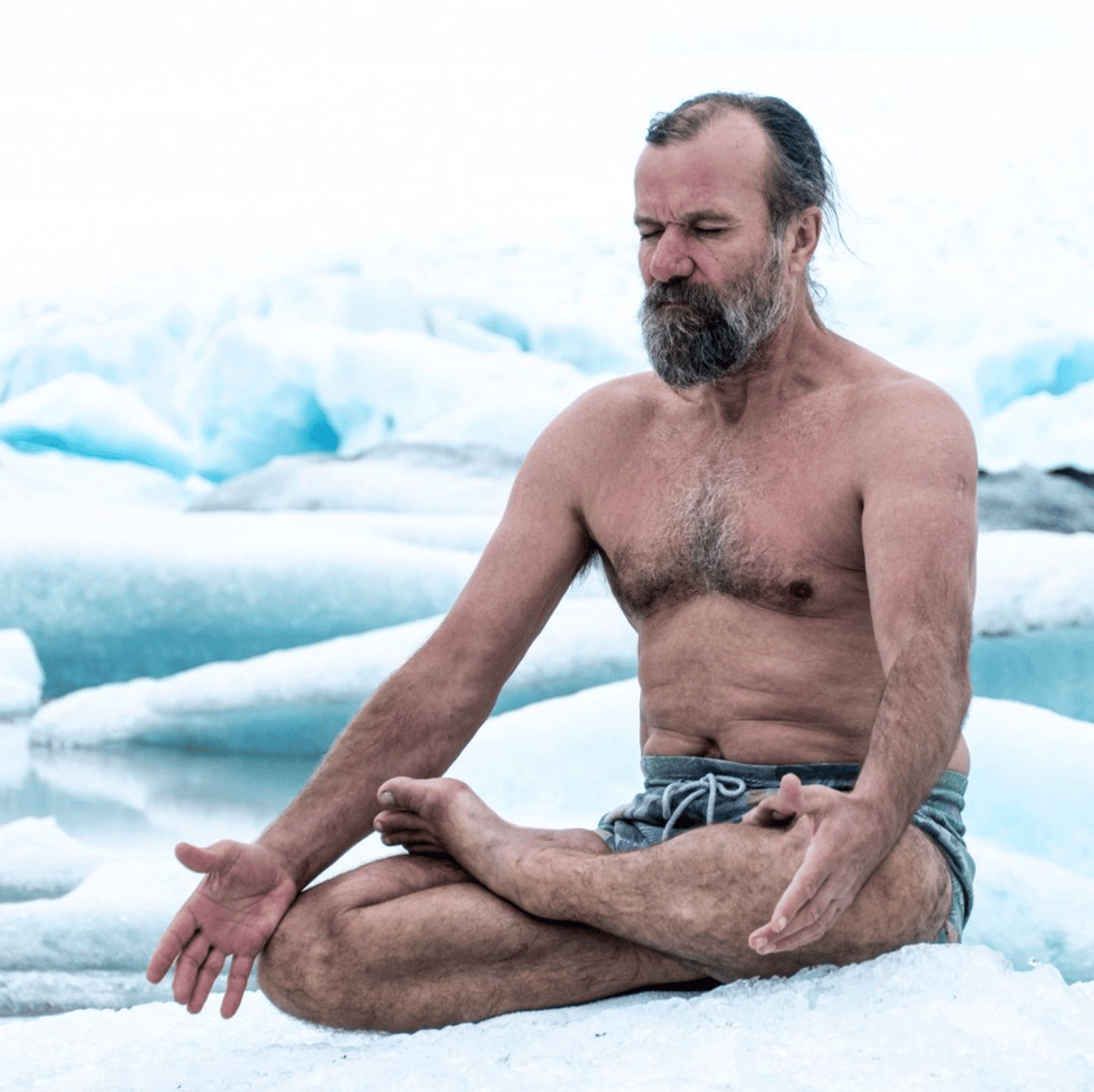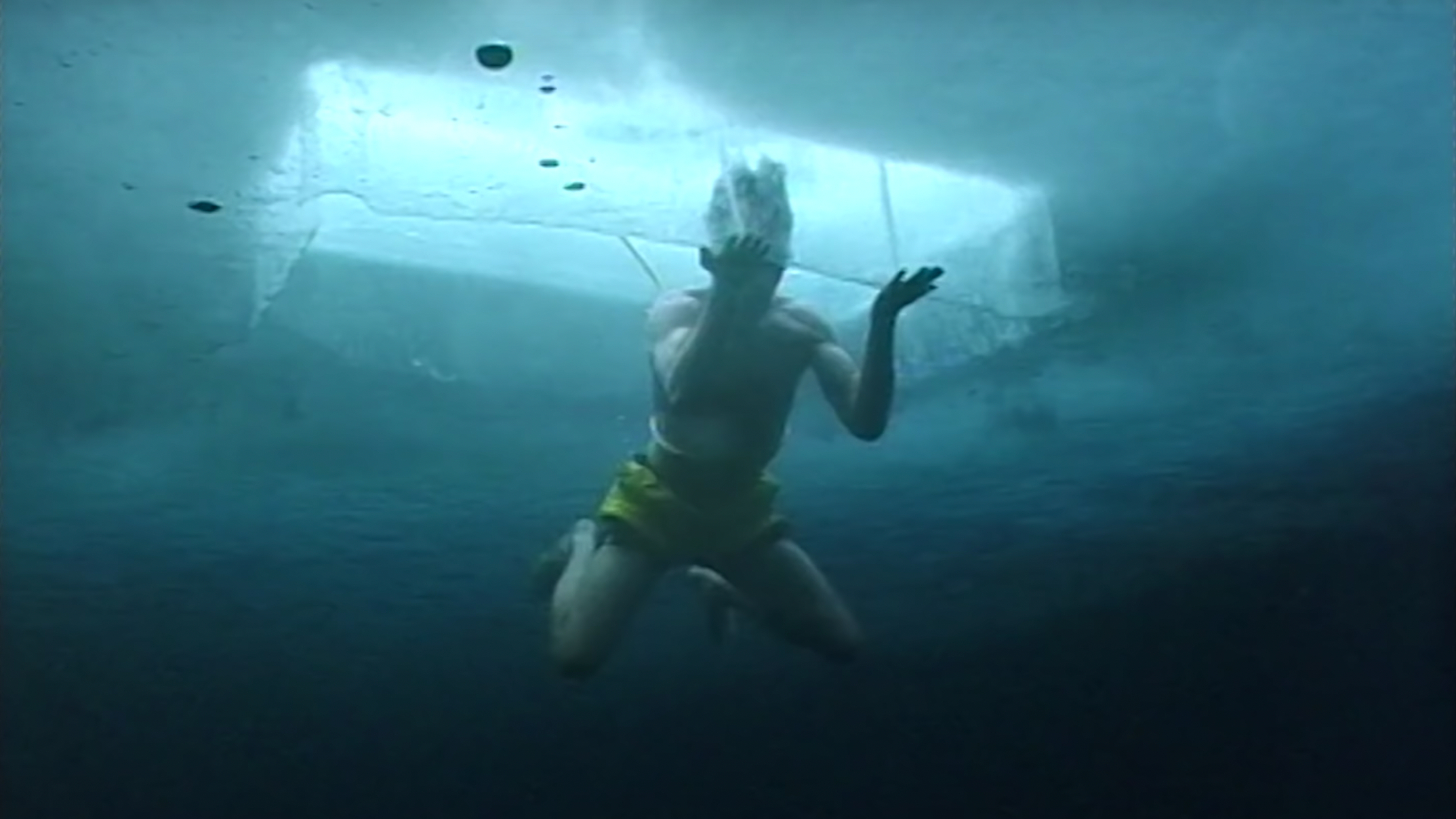Not to take anything away from Wim, but he didn’t invent forceful breathwork. Wim Hof simply popularised a method of breathing. Re-invigorated it. Introduced it to pop culture, and made it not only accessible – but cool. And that’s just fine, because it’s a worthy endeavour. He also married it with cold therapy, which seems to create a perfect package for those willing to push themselves to harness their mind and body (and stimulate the Vagus Nerve). We’ll get to the science in a moment.
Wim’s story of losing his wife to suicide and dedicating his life to helping others with this alternative therapy is moving. His personality, tenacity, and vigour all make this a magnetic and intriguing practice.
But it’s out there, right? How many of us have watched The Iceman and thought, “sounds pretty interesting, maybe I’ll give it a try sometime,” only to relegate that idea to the back of our to-do list without any real intent? Well, this article is a reminder: a request that you bump breathing up your agenda.
RELATED: The Joe Rogan Workout & Diet Plan
Now we could throw out some yoga words like Pranayama, Chandali, and Kundalini to pretend that we know anything about ancient practices that take a lifetime to master, but while chakras and celestial stories please some, we’re assuming most are more interested in the science and history behind this mysterious phenomenon.
Tummo literally means ‘inner fire’ and describes an ancient meditation technique developed by Tibetan monks centuries ago. It involves a combination of forceful breathing accompanied by deep meditation and visualisation.

There are legendary tales of monks melting the snow around them as they raised their body temperature with nothing but Tummo to keep them warm in the Himalayan mountains. Other stories tell of wet towels and sheets wrapped around monks’ bodies being dried as they invoked their ‘inner fire’ through this powerful practice.
A 1981 study conducted by Harvard researchers and facilitated by the Dalai Lama found that through Tummo meditation, “subjects exhibited the capacity to increase the temperature of their fingers and toes by as much as 8.3°C.”
Other benefits of Tummo are said to include:
- Reducing stress-related health issues like anxiety, depression, and high blood pressure,
- Enhanced concentration,
- Increased confidence and better physical health.
For the record, the study above also showed that everyday people would not be able to sustain this breathwork long enough to raise their body temp like the monks. For that, you need to pair Tummo breathwork with mastery of meditation. Anyone who’s tried meditation knows it isn’t that easy.
The journey from stress to calm

When we initiate Tummo style breathing (akin to hyperventilating) and create CO2 build up in our system, this triggers the sympathetic nervous system, putting us into a flight or fight state.
Why would you want to stress yourself out? Because in a controlled situation, you can then quell the symptoms of stress and anxiety in your body, teaching it to better handle stress.
How do we access that calm on demand? Breath-holding. A big deep breath of nourishing O2 followed by a prolonged hold means it’s time for the parasympathetic nervous system to take over. Known as the ‘rest and digest’ or ‘feed and breed’ state, this system helps us relax by flooding the body with hormones that slow the heart rate.
So, throwing the stress switch on your body, then reverting to a reassuring state of calm only moments later teaches our body that stress is okay. It happens, but it passes. This equips our body and mind to better deal with stress and to pay less attention to the symptoms that can create panic.
Our response to almost everything is relative. A mountaineer will calmly walk across a cliff ledge where most humans would unnerve and fall into a quivering mindless mess. If you’ve been there before, you know what to expect and how to handle the symptoms of stress.
Oh, and there’s that Vagus Nerve mentioned earlier. A key part of the parasympathetic nervous system, this nerve connects organs, such as the brain, heart, liver, and gut. Having a “low vagal tone” can lead to conditions such as anxiety, depression, gut problems, and inflammation. Stimulating this nerve (through cold therapy, deep breathing, and singing or humming) is proven to have a significant positive effect on the functioning of your body.
Let’s do a walkthrough so you know what to expect

Mr Hoff recommends you do three rounds of breathwork, with each round triggering more intense reactions within your body. So, while round one’s breath-hold does produce most of these symptoms, it’s not until rounds 2 and 3 that you really start to feel the pinch. So, here’s a quick run-through from a recent session I did.
As I launch into my third round this morning, I feel the usual effects that I’ve come to associate with this practice. Lightheadedness, lightness in the body that conjures an almost out of body experience, and decreased awareness (I sometimes lose track of my breath count as I approach the late 20s of this cycle but know that I’m good to hold between breath 30 & 35). With one last gasp of air, I purge the oxygen from my lungs, and break the cycle to hold.
The symptoms rise instantly. There’s a cold tingling in my chest, and a ringing in my ears. My extremities (hands and feet) share this cold tingly feeling, which then emanates up my limbs. It’s an odd form of discomfort. I’m slightly intoxicated, as my O2 and CO2 levels change, with giddiness and a slight urge to resist. I want to wriggle about but know that any movement will sap oxygen. I’ve hit the timer on my stopwatch and want to push for a decent hold.
This is where ego comes in and you get to observe the phenomenon of mind over matter. While our body is used to having oxygen by now, our brain tells it to wait. In the name of self-development, curiosity, bragging rights, whatever it may be, the mind can push the body beyond normal behaviour when an intention has been set. Freedivers are all too aware of this, and it is possible to push yourself beyond physical limits. Unfortunately, many a free-diver has met an early end by overestimating their lung capacity/remaining oxygen. Never try to push yourself too far.
Meanwhile, back in my breath hold, I ponder these scenarios while considering the strengths and weaknesses of the ego. The aforementioned physical reactions intensify, to a point where I’m acutely aware of everything. I feel the saliva at the back of my throat. The cool air on my skin and in my sinus. My back against the floor, and my body in a state of stillness. Suspended, like my breath. With this intense awareness being matched by stoic stillness, I sink into a powerful calm.
Relaxed, in control and content, I ease into a meditative state that allows me to drift into the mind and leave the body behind. I’m aware but distant… away thinking about writing this article in some crevice of my mind. Time passes, then at some further juncture come the triggers associated with the urge to breathe. Wriggling toes, swallowing, tightness in the chest.
However, before the breath-hold hits this point–between CO2 stress and the urge for oxygen–there lies a peaceful solitude that is well worth the effort. When I finally allow myself to take that gasp of fresh oxygen, I feel invigorated, energised, and fired up for the day. No better time to take a cold shower!
Just 10-15 minutes of Wim Hof breathing will give you your morning meditation, a stimulating bout of breathwork, and cold therapy all in one. With the science and history backing Wim up, his practice seems like a worthy investment to increase your quality of life.















